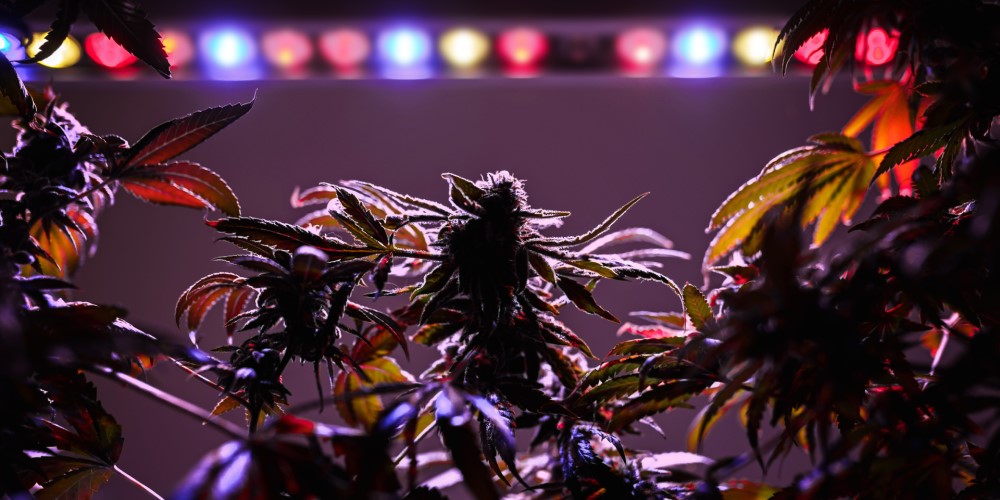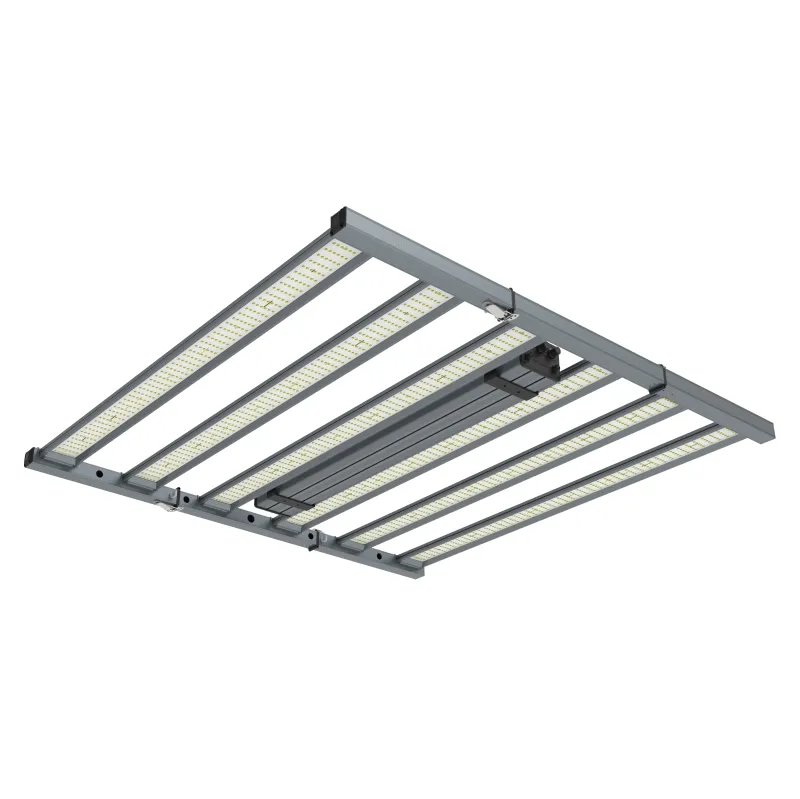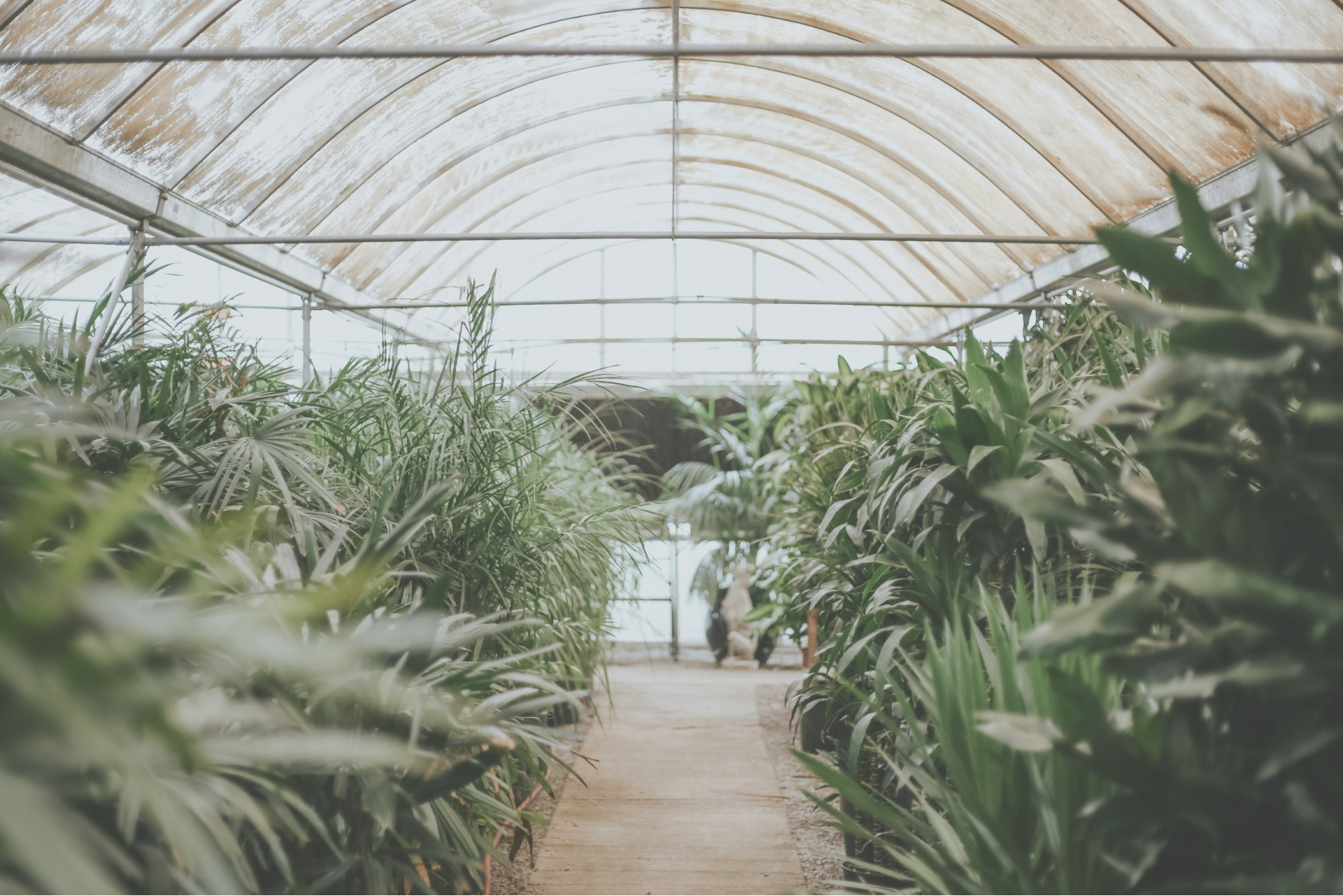10 tips for choosing the best LED grow lights

Over the years, indoor growers have used many different types of artificial light sources to achieve the best harvests. Industry consensus has now coalesced around LED lighting, which has surpassed other types of grow lights due to its versatility, efficiency and cost-effectiveness. But choosing the right LED grow lights for cannabis plants requires consideration of several key factors. We analyze them below!
As with many technologies whose use becomes popular, opinion is divided. Even with modern, high-performance, highly efficient LED grow lights, some growers are devout converts, while others are still unconvinced. While it may take some time to win everyone over, there is no denying that LED grow lights are an exciting prospect, probably the lighting technology of the future. And there is a lot to consider when choosing the best LED grow light. That’s why we’ve set out to analyze everything you should look for when purchasing one of these lights for your indoor marijuana plantation.
Always look for quality materials
Durability is one of the best features of LED lighting. With regular maintenance, a quality LED system should last a minimum of five years, with a lifespan ranging from 50,000 to 100,000 hours of continuous use. Several factors contribute to durability, including technical mechanisms to eliminate excess heat buildup or luminaire housings that resist corrosion in humid environments. So always look for models from manufacturers that use durable, high quality materials and offer a solid warranty on their products.

Pure Led EXPERT
The EXPERT 720W luminaire offers the possibility of individually designing a light curve for each cultivation phase and includes an extra channel to add UV radiation. The spectrum of the lamp can be adjusted to the needs of a specific genetics in order to get the best out of your crop. The luminaire is equipped with two individually adjustable channels for the Vegetative and Flowering phases, a…
Knows the PAR to determine power and consumption
In the past, producers only focused on watts (W) to measure energy consumption. For example, if we consider a single 1000 W device, it means 1 kW of energy consumption per hour. Normally, to get the best performance from cannabis, we recommend a power of LED lights from 150-200 W per square meter, levels that are sufficient for hungry plants such as marijuana.
But contrary to popular belief, higher wattage is not the best way to assess how much energy an LED light consumes. The true measure of power comes down to the amount of light that the plant itself needs to absorb, categorized as PAR, which stands for Photosynthetically Active Radiation, that is, the part of the electromagnetic radiation (light) spectrum that is useful for plants to activate photosynthesis.
PAR is similar to lumens in that both measure brightness. But while lumens measure brightness based on how the human eye perceives light, PAR measures all the light in the visible spectrum that your plants can actually use.
The most efficient lamps for cultivation are those that emit the most PAR photons (measured in micromoles) per watt of electricity consumed. While the most efficient HPS lamps produce between 1.4 and 1.8 µmol/W, the best LEDs reach almost double this efficiency, reaching 2.8 µmol/W. It takes almost half as much electricity to produce the same amount of PAR photons with a state-of-the-art LED as with an HPS bulb.
Consider the wavelengths and spectrums of light that plants need.
While getting the necessary light output is very important for your plants, the spectrum of light they receive is also very important. Outdoor plants evolved to grow in natural sunlight, which produces all colors of the spectrum. Therefore, the best grow lamps have full-spectrum light to better mimic natural sunlight and optimize plant growth.
Within the full spectrum, each wavelength (color) is responsible for a different effect. Blue and red light are the most prominent colors, as blue drives hardiness during the vegetative stage. Red light helps plants stretch and bloom in the flowering stage. However, plants also use other colors; for example, green light, which is very effective in penetrating the plant canopy. In addition, infrared and ultraviolet light are also important in stimulating resin production. Therefore, it is optimal to use a full-spectrum light that uses a combination of all colors at all stages of growth. In the case of LED grow lamps for indoor plants, some specific models may also include ultraviolet light-emitting diodes in their design.
Always look for low heat production
This is one of the most important points when choosing LED lighting. If you live in a place with hot summers, you can’t ignore the temperature. But there are also other reasons: durability and plant protection. Compared to traditional high-intensity discharge (HID) systems, LED grow lights are typically closer to the plant canopy to increase light intensity at the leaf surface, as they emit very little heat. This is advantageous if you have space limitations and also ensures optimal penetration and exposure. A well-balanced LED light converts little energy into heat and has a robust built-in heat dissipation system to prevent leaf burn or prevent the lamp from overheating, while saving on air conditioning equipment to cool the crop.
Considers diode quality and light efficiency
The semiconductor chip/LED diode converts electricity into light, but also determines the wavelength of the radiation. It is recommended to use LED diodes of at least 3 W power. The lower the power, the lower the light intensity will be. The standard for measuring light efficiency is micromoles/joule. In product listings, you will see it written as μmol/J or PPF (photosynthetic photon flux), which is the amount of photosynthetically active photons emitted by a light source per joule of electrical energy consumed.
The best LED grow lights have a high PPF because they produce more photons per second, so you can also find the PPF measured in μmol/s. Generally speaking, inexpensive LED lights will operate between 0.8 and 1.5 μmol/J, while other more expensive lights can achieve efficiency rates that are twice as high.
In addition to PPF, users can also view measurements in μmol/m2/s or PPFD (photosynthetic photon flux density). This sounds technical, but all you need to know as a grower is that PPFD measures the amount of photons reaching the surface of a plant per second. It is necessary to measure PPF and PPFD in the same plane at different heights to know the light intensity at different levels. For reference, cannabis needs the following PPFPs to thrive:
- PPFD Seedling stage: 200 to 400 µmol/s/m².
- PPFD Growth Stage 400 to 600 µmol/s/m² PPFD Growth Stage 400 to 600 µmol/s/m²
- PPFD Flowering Stage 600 to 1000 µmol/s/m²
- If you use CO2: Up to 1,000 µmol/s/m² in growth and up to 1,500 µmol/s/m2 in flowering.
Pay close attention to the distribution of light in your growing space.
When purchasing an LED, the area to be illuminated is a crucial factor, because it determines the number of LED lights you need. If you have many plants in each grow tray, it is simply not enough to have the right light intensity in one spot. Each part of the canopy must receive the correct amount of photons. Ideally, the intensity of its PPFD should be the same over the entire surface of the canopy. Otherwise, your results will be wildly inconsistent, with large buds here and there and deficits of them in other spaces.
So the first thing to do is to measure the exact size of your growing space. Next, look at the illumination capabilities of the lamp. For example, Version 2.0 of the well-known Pure LED “Q” range, with its 4 different models, is well suited to cover all growing areas, from small spaces of 0.5 m2 to large extensions by interconnecting multiple luminaires, as well as to combine with the various sizes of grow cabinets available on the market.
Don’t forget the beam angle
In addition to the area to be illuminated, the beam opening angle also matters, as the distribution and penetration of the light into the plants becomes a consideration. The beam angle you choose depends on the amount of surface you want to illuminate and the intensity you want the light to have depending on the distance to the source. Distributing the light as widely as possible may be the easiest solution and provides in many cases good results, but may not be ideal in terms of light penetration deep into the crop. Thus, a small angle reduces the coverage area, but offers more PAR for the plants, as the light is more focused. A larger angle broadens the overall light footprint, but reduces the density of light delivered to the plants.
A recommended figure is to use LED lights with a 120° beam pattern and no secondary optics to eliminate all possible efficiency losses, as it works very well for optimal light distribution in environments with limited mounting height (as is the case with grow cabinets), which is ideal if you want to place as many plants as possible within a specific coverage area.
Rewards ease of use and flexibility
Traditional lighting equipment requires, at a minimum, the purchase of a ballast, reflector and lamps. This is not the case for an LED grow light, as it is a single unit usually consisting of a thin panel with LED chips, optical lens and integrated power supply. This is what you will hang and plug in. Sometimes it is necessary to adjust the light position according to the type of plant and stage of growth, therefore, high quality LED lights are not only efficient, but also simple to use, allowing for easy height adjustment. There are even auxiliary LED lights that can be hung vertically, such as the P-LED range. So, after opening the package, always look for products that are easy to install and easier to maintain.
Additional functions are an advantage
While they are not a necessity, it is always good to consider the complementary functions of a luminaire. Many LED lights are dimmable, which gives full control over the light intensity, as is the case for example with Pure LED PRO V2.0, where the light intensity is adjustable through a built-in controller in 5 steps (0-25-50-75-100%). This allows you to keep your pots always at the same distance, avoiding having to move them, as the LED itself allows you to adjust the intensity. The Pure LEDs can also be daisy-chained by an external controller (not included) which provides even more versatility, such as setting the times of the on/off cycles. Even some LEDs will also allow their wavelengths and light spectra to be adjusted as needed. These are all features you could do without, but they certainly greatly enhance your growing experience.
Calculate costs and think of LED as a long-term investment.
Our final tip for selecting the best LED cannabis grow lights is to always consider their lifetime costs before purchasing any equipment. While HID lamps tend to be cheaper than LEDs, they end up being more expensive in the long run, as HID lighting increases energy costs, as well as requiring accessory items such as ballasts or reflectors. They also tend to need more space and additional ventilation because they produce a lot of heat. Simply put, in the long run it is better to invest in quality LED grow lights.
However, this doesn’t mean you have to spend a fortune. Full spectrum LED technology has advanced dramatically in recent years and it is now possible to find affordable, top-notch grow lights. Fortunately, at Pure Factory’s LED systems division we have made it even easier to get the optimal LED light for your investment, offering you the best price/quality ratio you can find on the market.

No comments